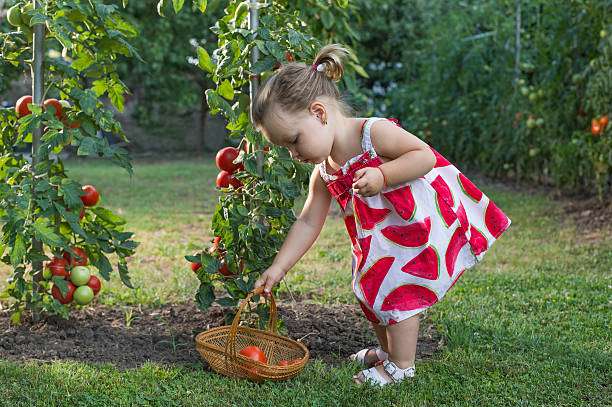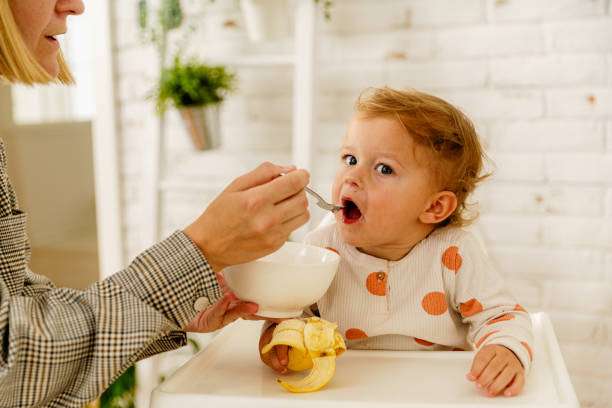
Introduction
Baby Foods A baby’s first years are extremely important for them to be healthy and to develop properly throughout their life. Proper nutrition is one of the key factors in the process enabling babies to get all the essential vitamins, minerals, and other nutrients they require to grow up healthy and strong. Being the ones who make a list of well-balanced foods, we are the ones to be perceived as giving the basic building blocks for healthy habits and overall wellness of our children.
Here is a deep delve into the top 10 nutritious baby food that can sustain a healthy development.
1. Avocado: A Creamy Superfood
The superfood status of avocado is based on its remarkable nutritional profile, which was often praised. High levels of healthy monounsaturated fats in avocados are the prime source of brain development, which is mostly discovered during the first few years after birth. The vitamins E, C, and B6, as well as potassium that they possess are also proven to be useful. Baby Foods
Table of Contents
How to Serve
Baby Foods Select a ripe avocado, halve it, remove the pit, and either mash it with a fork or inan inverter for a much smoother coat. Other fruits such as banana or apple may also be combined with avocado to give your little one a delightful start. Baby Foods The creamy texture of avocado is great for babies in transition to solids. Baby Foods
2. Sweet Potatoes: A Flavor Powerhouse and a Nutrient One
Sweet potatoes are both tasty and packed with nutrients. Because they are rich in beta-carotene, which the body converts into vitamin A, Baby Foods sweet potatoes promote good vision and a healthy functional immune system.
3. Oatmeal: The Soft Good-Morning Baby Foods
Oatmeal makes an excellent breakfast food, rich in iron, fiber, and B vitamins. Gentle and easily digestible, oatmeal is a staple for babies who are beginning solids. Oatmeal would give your baby a long morning of full stop and comfort. Baby Foods
How to Serve
If cooking oatmeal, let it be done in water or milk-perhaps depending on your baby’s age and dietary requirement. Blend with fruit puree-such as banana or applesauce-for smooth texturing. Oatmeal can be served warm or at room temperature. Perfect for those hectic mornings. Baby Foods
- Peas: Tiny but Mighty
The little pea has unassailable nutritional benefits. It actually serves as a significant supplier of proteins, vitamins A, C, and K while also providing diet-friendly fiber. Their bright hues and sweet taste make it a real choice for babies.
How to Serve
To serve peas, steam ’til tender and puree until smooth. For older babies, it could be left a bit chunkier so they can learn to chew. Peas pureed with other baby food purees, sweet potato or carrot puree, can make some delicious combinations introducing new flavors.
- Bananas: Nature’s Convenient Snack
Bananas are undoubtedly a favorite first food for babies. Naturally sweet, they are easily digestible and packed with potassium, vitamin C, and vitamin B6. Their soft texture makes it easy for babies to hold. Baby Foods
How to Serve
Simply mash a ripe banana with a fork; babies ready for finger foods can cut it into small pieces. It can also be mixed in with oatmeal or yogurt to make a great meal. For a fun treat, freeze banana slices for a cool treat during teething. Baby Foods
- Carrots: A Crunchy Source of Vitamin A
Another excellent choice for babies, carrots are great sources of beta-carotene building blocks for vision and immunity. Naturally sweet, it is among favorite vegetables for tiny diners.
Preparation
To prepare carrots, peel and chop into small pieces. Steam until tender, then puree or mash to taste. Roasted carrots could be added for their natural sweetness and might serve as finger food for older babies. Mixing carrots with peas or sweet potatoes may make them taste better and be healthier.
- Quinoa: A Complete Protein for Growing Babies
Quinoa is often regarded as a super grain due to its complete protein with all nine essential amino acids. It is high in fiber, magnesium, and other vitamins and minerals, thus making it an ideal food for babies, especially those on vegetarian diets.
Preparation
Before cooking, it is necessary to wash quinoa thoroughly to get rid of its natural coating, which can taste somewhat bitter. It should be cooked in water or low-sodium broth until it is fluffy. For very young children, prepared quinoa can be mixed with pureed vegetables or fruits. It can be eaten as a soft side dish or mixed into other meals for older babies.
- Apples: Sweet, Simple, and Satisfying
Apples are a good source of vitamin C and dietary fiber. The crunchy texture and sweet flavor of the apples make them a perennial favorite for many children. By introducing them to their babies, parents can help them develop their taste preferences.

Preparation
For babies younger than one, the safer route is to cook apple pieces until tender. They need to be peeled and chopped, then steamed or baked until tender. Afterward, pureed for smaller babies, or for older babies, grated raw apple could be given as a crunchy snack. A sprinkle of cinnamon can make them even better!
- Spinach: a Leafy Green Rich in Nutrients
An excellent source of nourishment, spinach provides iron, calcium, and vitamins A and C. The mild flavor allows an easy incorporation into many foods; introducing greens early may help develop the baby’s taste toward vegetables.
How To Serve
First, wash spinach well and steam it until wilted. Puree them with a little water or mix with fruit purees of banana or apple to mask the bitterness. Chop cooked spinach for older babies and mix it with cereals or pasta, and it would be a delightful nutritious treat.
- Blueberries: Antioxidant-Rich Little Berries
Besides tasting yummy and being rich in antioxidants, blueberries contain high amounts of vitamins C and K, and fiber. Their beautiful color and sweetness make them a fun yet nutritious addition for a baby’s diet.
How To Serve
Introduce blueberries at around six months. For younger babies, puree fresh or thawed frozen blueberries. For older babies, offer whole, soft blueberries as finger food. Mix blueberries with yogurt or oatmeal for a colorful meal loaded with nutrients.

Conclusion
To instill a habit of healthy eating in your baby, it’s important to expose them to a variety of nutritious foods. Starting with simple purees enables a view toward developing an allergy and helps the baby develop a taste for new foods. Gradually combine different foods as they wake up to keep mealtime fun and interesting. Always ask your pediatrician when you want to start introducing new foods, especially if in doubt about allergies.
Further Resources
For more information on baby nutrition and meal ideas, you may want to consult such reputable organizations as the American Academy of Pediatrics or a pediatric nutritionist. They will provide you with helpful insights into feeding practices and foods available to support your baby’s health and development.
Offering some variants of nutritious food will definitely encourage developing healthy eating habits in your little one. Starting off with single-ingredient purees gives you a means to watch out for any allergy problems and also helps your baby get accustomed to new flavors. Later, as they grow, begin to combine foods gradually to keep mealtime exciting while also introducing them to the notion of flavors and textures.
Your Baby Displays Ubr Antipathy
Each baby is unique, bearing distinct preferences and even sensitivities. Some may go for the strike of a new food; others might not try so readily; however, it is truly unorthodox for babies to turn up their noses at new foods. The possible resistance is being studied in research that says at least 15 exposures might be necessary for a child to accept a new flavor.
Patient persistence is very much the watchword here. Continue to provide a balanced diet, even if it means letting them go on at first. Above all, treat feeding time as discovery, and each new food is an option to discover.
Creating Positive Mealtime Experiences
Efforts should be made to generate positive mealtime experiences that will encourage your baby to eat food from different horizons. Family mealtimes are strong role models; babies learn by looking and imitating. Use colorful plates and bowls to make the meals more appealing. Also get the baby involved in the act, whether it be by letting the baby hold a spoon or get the feel of the texture of different food-this will increase the baby’s interest and willingness to try new things.
A Variety for Him
Introducing a wide variety of foods allows your baby to explore different flavors and gain a wide range of nutrients vital for healthy growth. Be sure to include fruit and vegetables, whole grains, and protein sources in his diet. As your baby gets better accustomed to eating solid foods, he can start being introduced to new flavors with combinations of sweet potato and peas or oatmeal with bananas.
Modeling Healthy Eating Behaviors
In many ways, modeling healthy eating behaviors yourself can be a very solid way to make good habits. Children are more likely to try new foods that they see their parents or caregivers eat. Rather, family mealtime creates an opportunity for everybody to try new foods together. Baby Foods Talk about the flavors and textures together and applaud him for his willingness to try something new, regardless of whether he liked it.
Some Pediatricians say that one should consult with a pediatrician for every allergy-related and nutritional query. Baby Foods Pediatricians will provide appropriate advice for a certain patient depending on the specific needs of one’s baby in terms of growth and nutrition. In addition, should your baby have any dietary restrictions or medical condition, your doctor can guide you in better food choices. Baby Foods Keeping yourself updated with latest recommendations and research on baby nutrition will thus empower you to make the best choices for your child.

It’s investment in their nutrition that will create the path to good eating habits and good health for a lifetime. Everything that they invest into your child’s growth years will later tell in their actual health as well as their relationship with food as they grow. Baby Foods Teaching the infant to love fruits, greens, and whole grains now will help in reducing the likelihood of fussy eating later. Baby Foods
Baby Foods These top ten baby foods are sure to provide a head start towards health in your little one. Have fun exploring new tastes and textures together! It truly is about being messy and blissful while witnessing the many strides taken by the baby, being reassured that every little meal is a strong step towards his or her health and happiness. Baby Foods

Pingback: incredible Save Money 2025